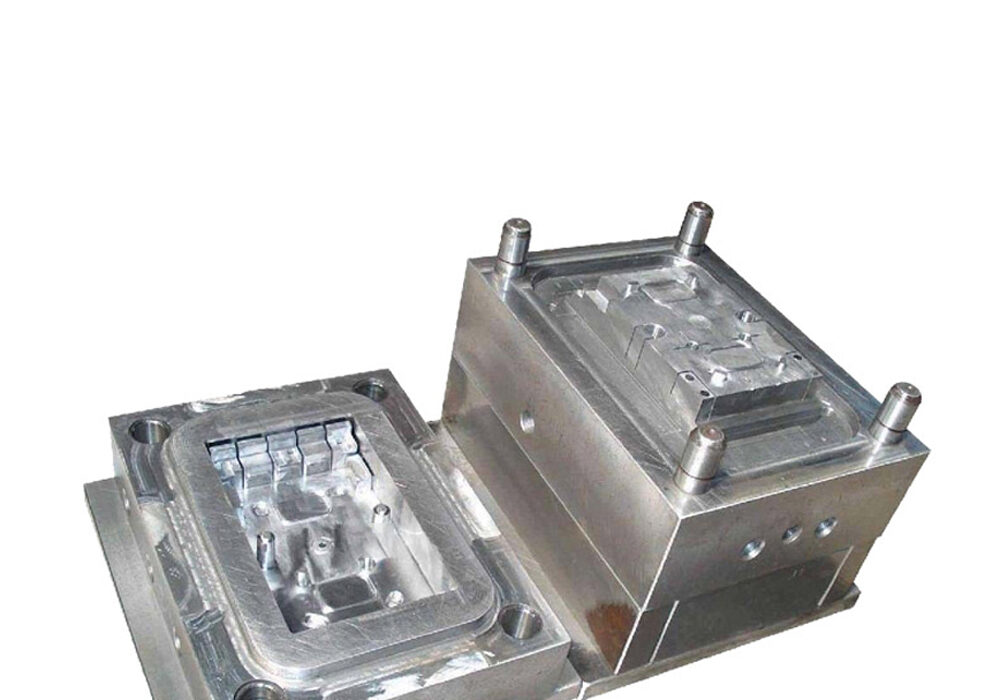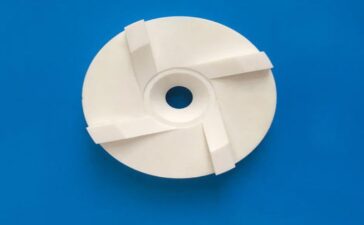Rotational molding is a plastic molding method that relies on the centrifugal force of high-speed rotation of the mold to heat, cool and mold the plastic in the mold. At present, rotomolded products have developed from ordinary civilian products to industrial products, and their functions have also changed from single container performance to structural performance. Common civilian rotomolded products mainly include rotomolded tables and chairs, rotomolded beach chairs, rotomolded flower pots, rotomolded kayaks, rotomolded fishing boats, etc .; industrial rotomolded products mainly include rotomolded fuel tanks for cars and rotomolded mudguards Boards, rotomolded bumpers, rotomolded inspection wells, rotomolded sewage tanks, etc.
The cost of rotomolding molds is low. For products of the same size, the cost of rotomolding molds is about 1/3 to 1/4 of the cost of blow molding and injection molds, which is very suitable for molding large plastic products. With the development of rotomolding equipment and molds, products that cannot be completed by injection molding, blow molding, extrusion molding, etc., such as very complex shaped products can be completed by rotomolding.
The key factors of rotomolding are mainly in four aspects:
1. Plastic raw materials for rotomolding
Rotational molding usually uses 30-40 mesh granular raw materials. At the same time, due to the long rotational molding cycle, the raw materials are required to have good fluidity and thermal stability, and also require good impact strength or toughness. Linear low density polyethylene ( LLDPE) can meet these requirements. At present, in the domestic rotomolding product market, more than 99% of the raw materials of rotomolding products are polyethylene (PE), 95% of which are very suitable for rotomolding grade LLDPE, polyethylene and composite materials. The proportion of rotomolded products in the whole rotomolded products is 75%. In addition, special materials for rotomolding grades under development include PVC, ABS, rubber-modified polypropylene, and polycarbonate. Practice has proved that the size of the polyethylene powder particles that are added to the mold at one time should not be uniform or uniform. The ordered powder particles in the heating mold, because the thickness and thickness of the powder absorb heat and fuse time, the molten plastic can be more orderly Stacked and formed.
2. Rotational molding mold
In terms of mold design, rotomolding molds are mostly shell-shaped, composed of upper and lower mold halves, with thin walls and uniform wall thickness and light weight. In order to ensure that the plastic has good fluidity in the mold, the mold design needs to be reasonable and concise. In the structure, it is necessary to avoid deep cavities and holes, as well as structures such as ribs and solid protrusions to ensure that the powdery raw materials can smoothly flow in the cavity of the mold. The mold should have a clamping structure that is easier to open and close, to ensure that the mold can be closed when heated and cooled, and can be easily opened when loading and unloading materials. The requirements on the mold material are not high, but the thermal conductivity is required to be good, so most of them use 2-5mm steel plates. In the design of the mold, it must be ensured that the sum of the quality of the mold and the material cannot exceed the maximum bearing capacity of the rotomolding machine.
3. Cooling method of rotomolded products
Common molds for rotomolding are steel plate molds and aluminum alloy molds. The main cooling methods are: strong wind cooling and water mist cooling. The water mist cooling efficiency is high, but the product is prone to contraction and deformation. The air cooling efficiency is low, but the product quality stability is good. For the steel plate mold, the instantaneous thermal expansion and contraction will bring about the distortion and deformation of the steel plate, as well as the shedding of the Teflon layer, which easily causes the corrosion of the steel mold. Due to their characteristics, aluminum alloy molds are generally small in size and are used for the production of rotomolded products with high precision requirements; while steel plate molds are mostly used in the production of large-scale rotomolded products, steel plate molds must not use water cooling.
4. Parting surface of rotomolding mold
The design and installation of the rotomolding mold should facilitate the relative movement of the airflow around the mold surface, so that the mold surface can be heated and cooled uniformly. The mold should be provided with air passages to prevent the gas from being heated and expanded during the heating process to extrude the molten plastic extension die, and to prevent the negative pressure in the mold during the cooling process from causing deformation of the mold and plastic products. For small and medium-sized molds, the parting surface is usually used for exhaust; for large molds, vents are specially provided, but the vents should not be too large, otherwise it will cause difficulty in demoulding the product.
Rotational molding is very suitable for the production of large-scale hollow plastic products in small batches, varieties, and colors. It belongs to a higher value-added processing technology. Under the diversified development trend of plastic products today, it is especially advocating a new situation of personalized industrial design. Next, its development prospects are more promising.
Our company has customized all kinds of rotomolding molds and rotomolding products for customers at home and abroad for a long time. We can open molds according to the drawings or samples provided by customers and envisage design.




